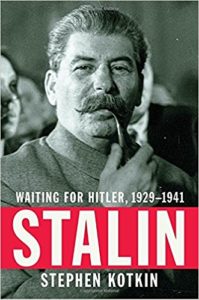
Stephen Kotkin is a historian who has written several outstanding books on Russian history and is now in the process of distilling his lifetime work into a monumental three part biography of Stalin. Volume 1 dealt with Stalin’s early life and his progress from relatively peripheral disciple of Lenin in 1917 to Lenin’s handpicked general secretary of communist party in 1922, to undisputed (though not yet completely all-powerful) boss and ruler of the Soviet Union by 1928. By the end of that volume, Stalin was firmly ensconced in this position, having successfully seen off the challenge from Trotsky, who lost out partly because almost nobody around him liked him, but mostly because he was neither as hardworking, nor as competent, iron-willed or crafty as Stalin. It is true that Trotsky imagined himself as the real “Marxist intellectual” in this fight, but the autodidact Stalin was no intellectual slouch, and Trotsky’s low opinion of him in this arena is also a (small) part of why he lost this fight; he underestimated his opponent. Of course, both of them believed fully in the Marxist-Leninist picture of history and society, complete with the necessity of class war, the central role of the proletariat and the idiocy of the peasants, so it is easy to dismiss the intellectual output of both parties as equally delusional, but that is not how it looked in the 1920s, so we should leave such retrospective wisdom out of the discussion. In any case, by 1928, Stalin had kicked Trotsky out of the Soviet Union, and had defanged or sidelined all his other rivals within the Bolshevik leadership.
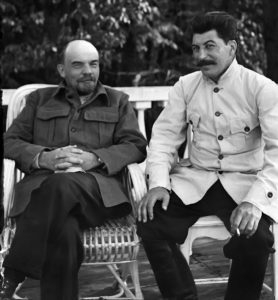
The next phase was building socialism; As Kotkin makes abundantly clear, Stalin was power hungry and ultimately became one of history’s greatest (or vilest) despots, but he was not just power hungry. He was also an idealist who believed in the revolution and its ideals and many (if not all) of his most vicious campaigns make no sense without this crucial aspect of his personality. If all he had wanted was personal power, there was no need to collectivize the peasantry and force the industrialization of Russia at such tremendous human cost. Even the purges of 1937-39 were about more than personal power, though by the that time the personal and political were inseparable, as Stalin (and many other dedicated communists in the Soviet Union) clearly felt that his person was essential to defending and completing the work of the great Bolshevik revolution. Any way, whether all good communists felt the need for a purge or not (and surprisingly, several, including many who fell victim to it, did express approval of the idea of a purge), they all agreed that private agriculture had to go. The only question was, how quickly could this be done? and what level of coercion was justified? Many of them shrank from the massive human cost, but almost none believed that socialism could be built without it.
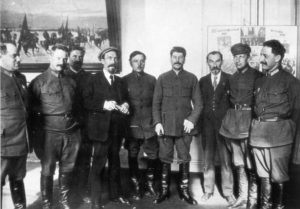
The first third of the book deals with Stalin’s attempt to fulfill this fundamental premise of Marxism-Leninism by forced collectivization and industrialization, at tremendous human cost. As Kotkin makes clear, the policy itself was not a Stalinist aberration, but the will to carry it through (and it could not have been carried through without massive coercion and cruelty) in the face of such colossal human suffering did owe much to Stalin. Kotkin describes this time, with its immense challenges, its horrendous cruelties, its massive tragedies and, yes, its heroic achievements, in great detail. He is no fan of Stalin, but he is not some sort of anti-communist propagandist who is willing to entertain any smear in the service of the larger anti-communist project. For example, he makes clear that while suffering in the Ukraine was immense, it was not a systematic attempt to eradicate Ukraine or Ukrainians, it was part and parcel of what happened to peasants everywhere in the USSR. The highest death rates were not in Ukraine, they were in Kazakhstan (where up to half of the Kazakh population were killed via starvation, exposure and illness as the Soviets forcibly “de-nomadized”, collectivized and rationalized (“modernized”) their society) and many parts of Russia saw suffering and death on the same scale as Ukraine. And while Jews, Poles and other peripheral nationalities played a disproportionate role in the Soviet regime, their gravitation to the Bolshevik party is not a total surprise, given that they tended to be oppressed by the Czarist order (and in the case of the Jews, were disproportionately intellectuals; and the pre-1917 Bolshevik party was not really a proletarian party, it was a party of (mostly impoverished, certainly disaffected) intellectuals. They were also proportionately less among the victims in this stage because they were disproportionately urban, while the suffering in this phase, was mostly rural.
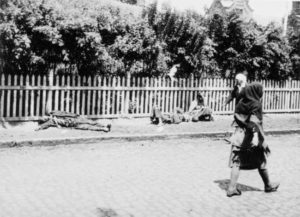
By 1934, the worse was over and the party celebrated at its congress of victors. But the celebration did not last. Hardly had the Soviet Union started to emerge from the terror of collectivization when it was pushed into the terror of the great purges of 1937-38. Kotkin argues that the ability to carry out such purges and the tendency to conduct them was built into the Leninist system (a fact that is also borne out by the experience of other Leninist revolutions), but the scale and cruelty of this particular purge did owe much to the personality and personal demons of Stalin. Starting with the Kirov assassination, Stalin turned on the party, the military and the state apparatus itself, using the NKVD to unleash a widening reign of terror that eventually led to 1.6 million arrests (out of a total adult population of 100 million) and over 800,000 executions. The terror (unlike, for example, Mao’s decentralized, bottom-up purge of the Chinese communist party in the cultural revolution) was highly bureacratized and tightly controlled from above by Stalin and his NKVD chief Yezhov. People were not killed by crazed mobs or local “people’s courts”, they were arrested and tortured by a vast and well organized system of oppression and terror. Quotas were set from above, arrests were duly recorded, as were confessions. Show trials were conducted in some cases, but most people were “sentenced” by special tribunals that decided the fate of hundreds of thousands, but even during this industrial scale slaughter, lists were made, and they were duly presented to higher ups and signed by them. At least 383 execution lists signed personally by Stalin have survived, containing the names of more than 43,000 “enemies of the people” and frequently marked with comments and underlined in various colors.
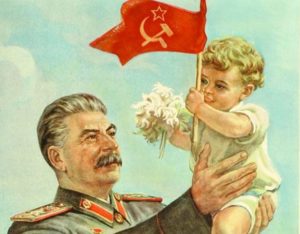
Stalin, with his prodigious appetite for work, personally read the confessions of most high officials, in many cases having personally ordered their arrests. Confessions obtained by torture and sometimes splattered with the blood of the victims were duly presented to him, and marked up by him in multi-colored pencils, and circulated among select members of his inner circle with his comments. In his absence, his leading henchmen (e.g. Molotov, Voroshilov, Zhdanov and Mikoyan) signed off on death lists, but the big man generally kept a very close eye on things. He also took sadistic pleasure in forcing his closest and most loyal colleagues to denounce (and therefore, condemn to torture and execution) some of their favorites and even close relatives and friends. Some, like the heavy industry commissar Ordonikidze tried to resist the extension of the massacre to their own domains (though they all supported the purging of other departments) and Ordonikidze ended up killing himself, but most of them joined in, and not just from an instinct for self preservation. There was genuine enthusiasm on the part of some for at least some part of the terror.
The book is incredibly detailed (and well sourced and documented) but even this book is not enough to fully grasp all aspects of the terror. The interested reader will have to read several other books to get a truly well rounded picture of this horror. Suffice it to say that the scale of the purge defies explanation; Stalin executed almost his entire military high command, half of his central committee, tens of thousands of loyal party functionaries and scores of thousands of lower level officials, engineers and managers. He decimated his own army and intelligence service, decapitated the foreign service and undermined intelligence gathering operations all over the world; the sheer scale and indiscriminate nature of it is examined from operational, ideological or even personal psychological angles, but by all of these criteria, it still fails to make sense.
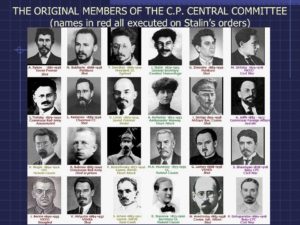
Most of those killed were loyal party members and almost all of them were innocent of the fantastic crimes they were forced to confess to by NKVD torturers (though it should be noted that most of the higher officials and NKVD operatives were guilty of having killed many innocents during the civil war and collectivization). The details are horrendous but they are also worth reading. There have been other reigns of terror in history, but none that really matches this one in its ferocity, its apparent pointlessness, and its iterative cycle of auto-annihilation, with betrayers and accusers soon ending up facing the same fate as the friends and colleagues they had just betrayed. Ultimately, Yezhov and Frinovsky, the very top people in the NKVD who carried out the worst of the terror, were themselves arrested and tortured (and duly confessed to the same fantastic crimes), before being shot by the same executioners (over the course of the terror, the NKVD arrested more than 20,000 of its own employees as suspected traitors).
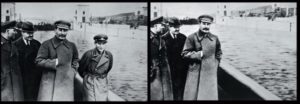
Kotkin explores many factors that led to the purge, but no single factor fully explains it: Stalin’s increasing personal paranoia, the fundamentally paranoid nature of the Leninist state, the existence of a coercive apparatus that could extract confessions from anyone, and that then ended up arresting and getting confessions from everyone named in the first fake confession; even the urge to replace existing functionaries with younger and better men, all these probably played a role, but no explanation is fully satisfactory. No wonder Yuri Slezkine fell back on a primarily religious explanation, more akin to scapegoating and witch hunts than rational statecraft.
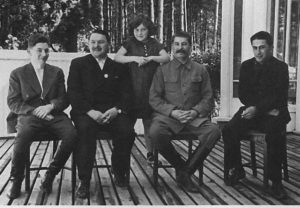
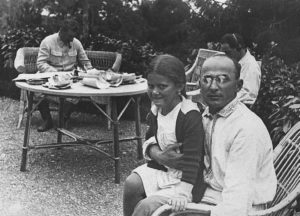

True, Stalin was waiting for Hitler. When Operation Barbarossa came, Stalin was found napping. Disastrous Soviet losses in the 1st year of Barbarossa can be directly attributed to Stalin USSR had every chance of losing the war. Soviets survived by the skin of their teeth. Hitler completely outwitted , outgunned and outfoxed Stalin in 1941. Stalin was a victim of his own cynicism with very little accountability.